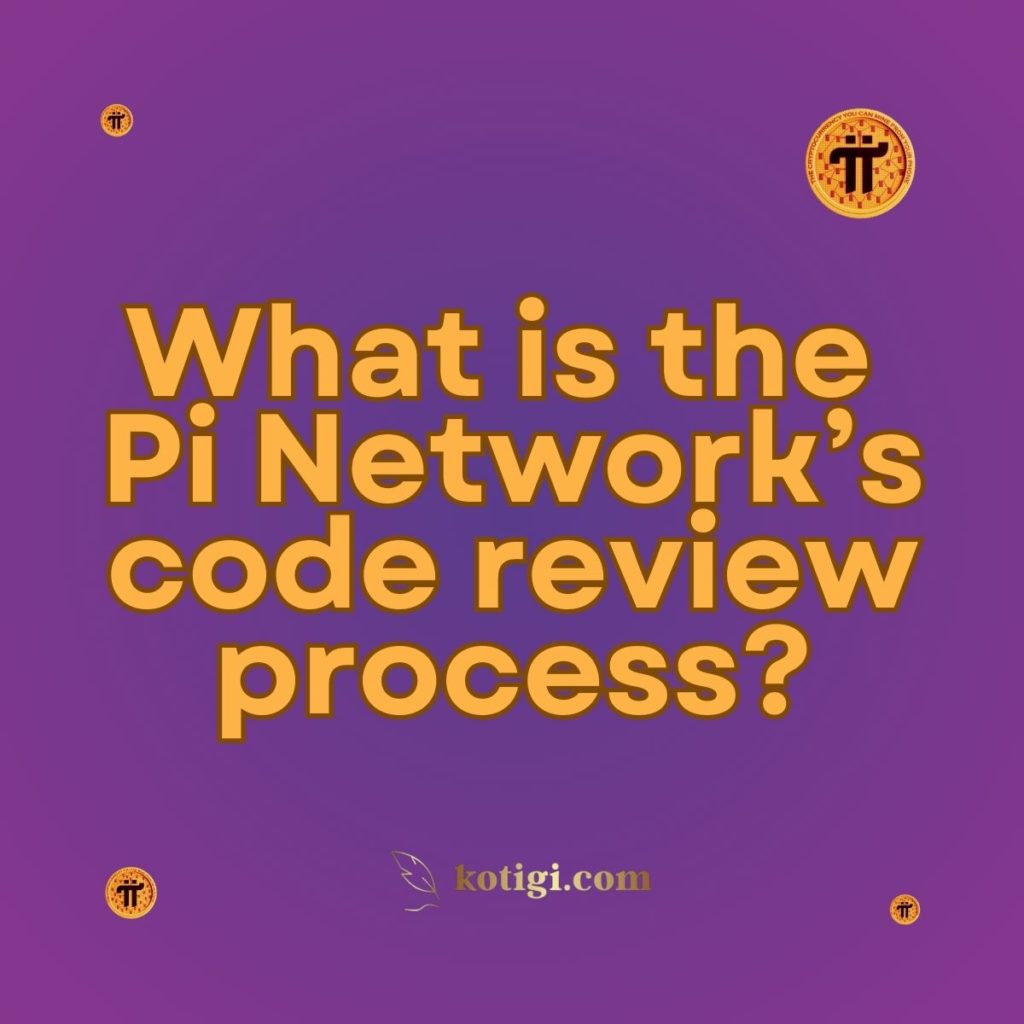
What is the Pi Network’s code review process?
The code review process in the Pi Network is crucial for maintaining the quality and security of its software development. By ensuring that all code changes undergo thorough scrutiny, the network can identify potential issues early, enhance collaboration among developers, and ensure adherence to coding standards. This post explores the code review process within the Pi Network, highlighting its importance, structure, and the role it plays in fostering a secure and efficient development environment.
Introduction
In the fast-evolving world of blockchain technology, maintaining high standards of code quality is paramount. The Pi Network, with its unique approach to building a decentralized platform, recognizes the significance of a rigorous code review process. This process not only ensures that the code is functional and secure but also enhances collaboration among developers and contributes to the overall success of the platform. In this article, we will delve into the Pi Network’s code review process, discussing its importance, key components, and the benefits it brings to the development team and the wider community.
Importance of Code Review
The code review process serves multiple critical functions within the Pi Network’s development framework.
Quality Assurance
First and foremost, code reviews are instrumental in maintaining high-quality code. By subjecting code changes to scrutiny from fellow developers, the likelihood of bugs and vulnerabilities is significantly reduced. This quality assurance is essential, especially in a blockchain environment where security is paramount.
Knowledge Sharing
Code reviews also promote knowledge sharing among team members. Developers can learn from each other’s coding styles, techniques, and solutions to problems. This collaborative environment fosters a culture of continuous learning and improvement, benefiting both individual developers and the team as a whole.
Standardization of Coding Practices
Another vital aspect of code reviews is the enforcement of coding standards and best practices. By establishing clear guidelines for code contributions, the Pi Network ensures consistency and readability across its codebase. This standardization simplifies maintenance and facilitates onboarding new developers, as they can quickly grasp the established coding conventions.
Code Review Workflow
The code review process within the Pi Network follows a structured workflow to ensure efficiency and thoroughness.
Step 1: Code Submission
The process begins with a developer submitting their code changes through a version control system, such as Git. This submission typically includes a description of the changes made, the rationale behind them, and any relevant documentation or tests.
Step 2: Automated Checks
Upon submission, automated checks are triggered. These checks may include running unit tests, static code analysis, and style checks to ensure that the code adheres to established guidelines. Automated checks help catch basic issues early in the process, allowing developers to address them before the review begins.
Step 3: Peer Review
Once the automated checks are complete, the code is assigned to one or more peer reviewers. These reviewers are responsible for examining the code for functionality, readability, and adherence to best practices. The peer review phase is crucial, as it provides an opportunity for developers to offer constructive feedback and suggestions for improvement.
Step 4: Feedback and Revisions
After the review, feedback is provided to the original developer. This feedback may include suggestions for code improvements, identification of potential bugs, or questions regarding the implementation. The developer then has the opportunity to make revisions based on the feedback received.
Step 5: Approval and Merging
Once the necessary changes are made, the code is resubmitted for review. If the reviewers are satisfied with the revisions, they will approve the changes. The approved code is then merged into the main codebase, making it available for deployment.
Best Practices for Effective Code Reviews
To maximize the benefits of the code review process, several best practices should be followed.
Keep Reviews Focused
Effective code reviews should focus on a limited scope to ensure thorough examination without overwhelming the reviewer. It’s advisable to limit the number of lines changed in a single review, as this increases the likelihood of identifying issues and providing meaningful feedback.
Provide Constructive Feedback
Reviewers should aim to provide constructive feedback that is clear and actionable. Instead of merely pointing out flaws, they should suggest possible solutions or alternatives. This approach fosters a positive atmosphere and encourages developers to view feedback as an opportunity for growth.
Encourage Open Communication
Encouraging open communication during the code review process is essential. Developers should feel comfortable discussing their thought processes and decisions, while reviewers should ask questions to clarify any uncertainties. This dialogue helps deepen understanding and strengthens collaboration.
Tools Supporting Code Review
The Pi Network utilizes various tools to facilitate the code review process effectively. These tools streamline the workflow and enhance collaboration among developers.
Version Control Systems
Version control systems like Git are fundamental to the code review process. They allow developers to track changes, manage code branches, and collaborate efficiently. The integration of version control systems with code review tools enables seamless code submission and review.
Code Review Platforms
Dedicated code review platforms, such as GitHub or GitLab, provide an organized environment for conducting reviews. These platforms allow developers to comment on specific lines of code, track review progress, and manage feedback efficiently. The use of such tools enhances the overall code review experience.
Challenges in the Code Review Process
Despite its numerous benefits, the code review process may face certain challenges that can hinder its effectiveness.
Time Constraints
One of the primary challenges is time constraints. Developers may be pressed for time to complete their tasks, leading to rushed reviews. It’s essential for teams to prioritize code reviews and allocate sufficient time for thorough examination.
Resistance to Feedback
Another challenge is the potential for resistance to feedback. Developers may take criticism personally, which can create tension in the team. Fostering a culture of constructive feedback and emphasizing the collaborative nature of code reviews can help mitigate this issue.
Conclusion
The code review process is a critical aspect of the Pi Network’s development strategy, ensuring high-quality, secure code and fostering collaboration among developers. By following a structured workflow and adhering to best practices, the network can maintain a robust codebase that meets the needs of its users. As the Pi Network continues to evolve, the commitment to a thorough and effective code review process will play a crucial role in its success, ultimately benefiting the entire community.
Key Takeaways:
- The code review process is essential for maintaining high-quality code and ensuring security.
- It involves multiple stages, including code submission, automated checks, peer reviews, feedback, and merging.
- Knowledge sharing and standardization of coding practices are significant benefits of code reviews.
- Best practices for effective code reviews include keeping reviews focused, providing constructive feedback, and encouraging open communication.
- Version control systems and code review platforms are vital tools supporting the process.
- Challenges such as time constraints and resistance to feedback can be addressed through effective team dynamics and communication.





